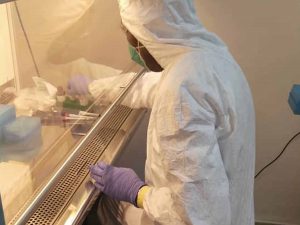
Predominance of Plasmodium malariae-falciparum Co-Infection by Molecular Speciation in Bangolan, North West Region of Cameroon.
authors
Olivia Afa Achonduh, Aristid Herve Ekollo Mbange, Atogho-Tiedeu Barbara, Innocent Ali Mbulli, Daniel Achinko, Palmer Masumbe Netongo and Wilfred Fon Mbacham.
abstract
Abstract: Although microscopy still remains the gold standard for the diagnosis of malaria, rapid diagnostic tests (RDTs) and PCR assays have been shown to be sensitive and specific. Very few comparative studies have been reported of the three diagnostic methods on the same samples in vulnerable groups. Microscopy, RDTs and PCR assays were used for detection and speciation of Plasmodium falciparum (Pf), Plasmodium malariae (Pm) and Plasmodium ovale (Po) in patients in a rice culture savanna ecotype. Fifty four children and 16 pregnant women presenting with a fever were recruited. Bloods collected was used for thin and thick smears, perform RDTs and spotted blood on filter paper for DNA extraction and performance of a PCR. Mean parasitaemia was 37,619.06 (± 33,599.04) p/μL and 7,512.5 (± 12,446.11) p/μL for children and pregnant women, respectively. A total of 87.14% were positive by microscopy, 85.71% by RDTs and 90% by PCR. Distribution of Plasmodium species as identified by PCR was 72.86% Pf/Pm, 11.43% Pf/Pm/Po and 5.43% Pm while 10% were negative. Cohen’s Kappa value for PCR and RDTs was K = 0.75 (CI = 0.28-1.22) while PCR and microscopy was K = 0.64 (CI = 0.18-1.10). Malaria infection in Bangolan was mostly due to mix infection predominantly P. falciparum/P. malariae.
Key words: Plasmodium sp., microscopy, rapid diagnostic tests, PCR, children, pregnant women.

